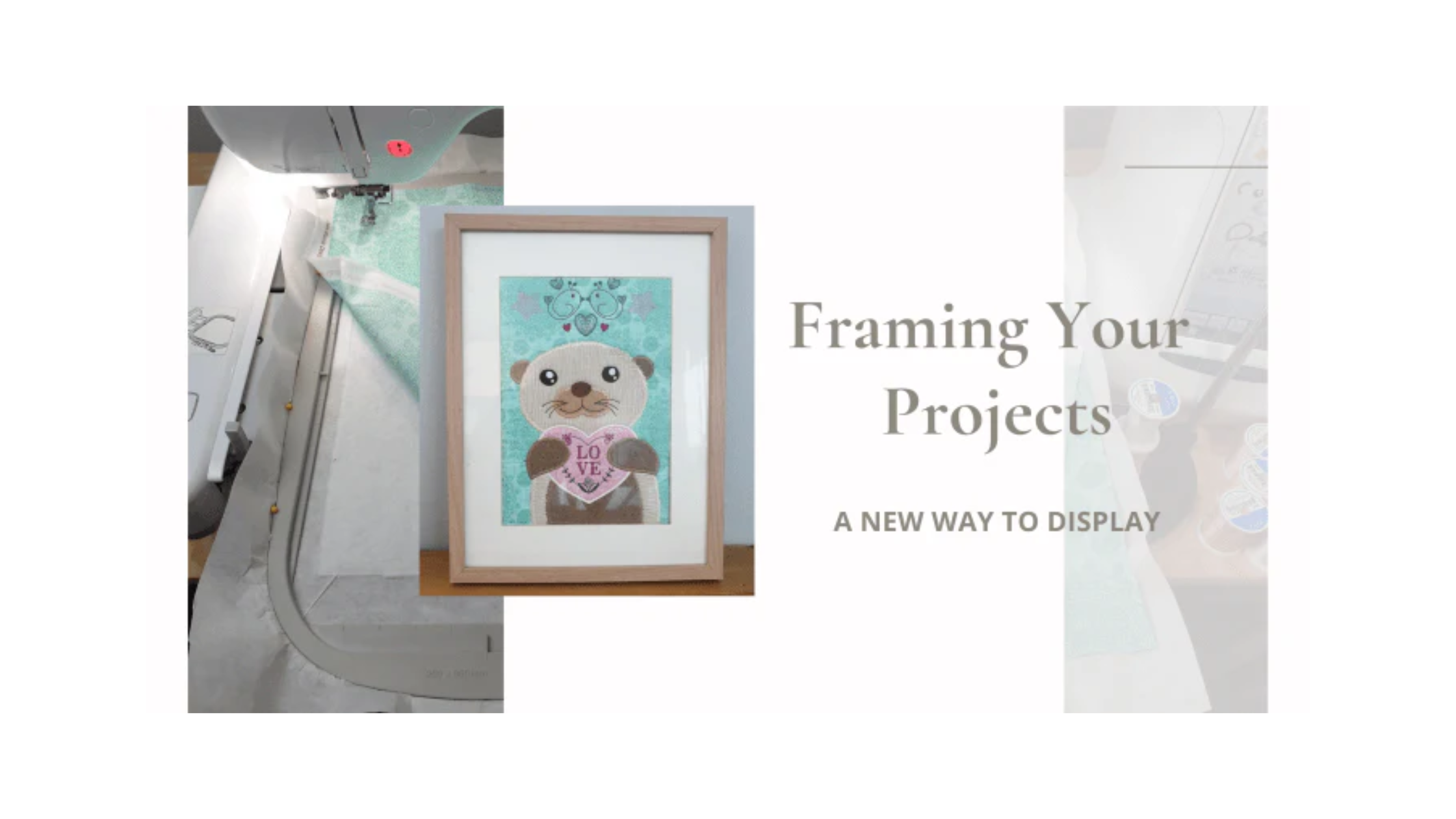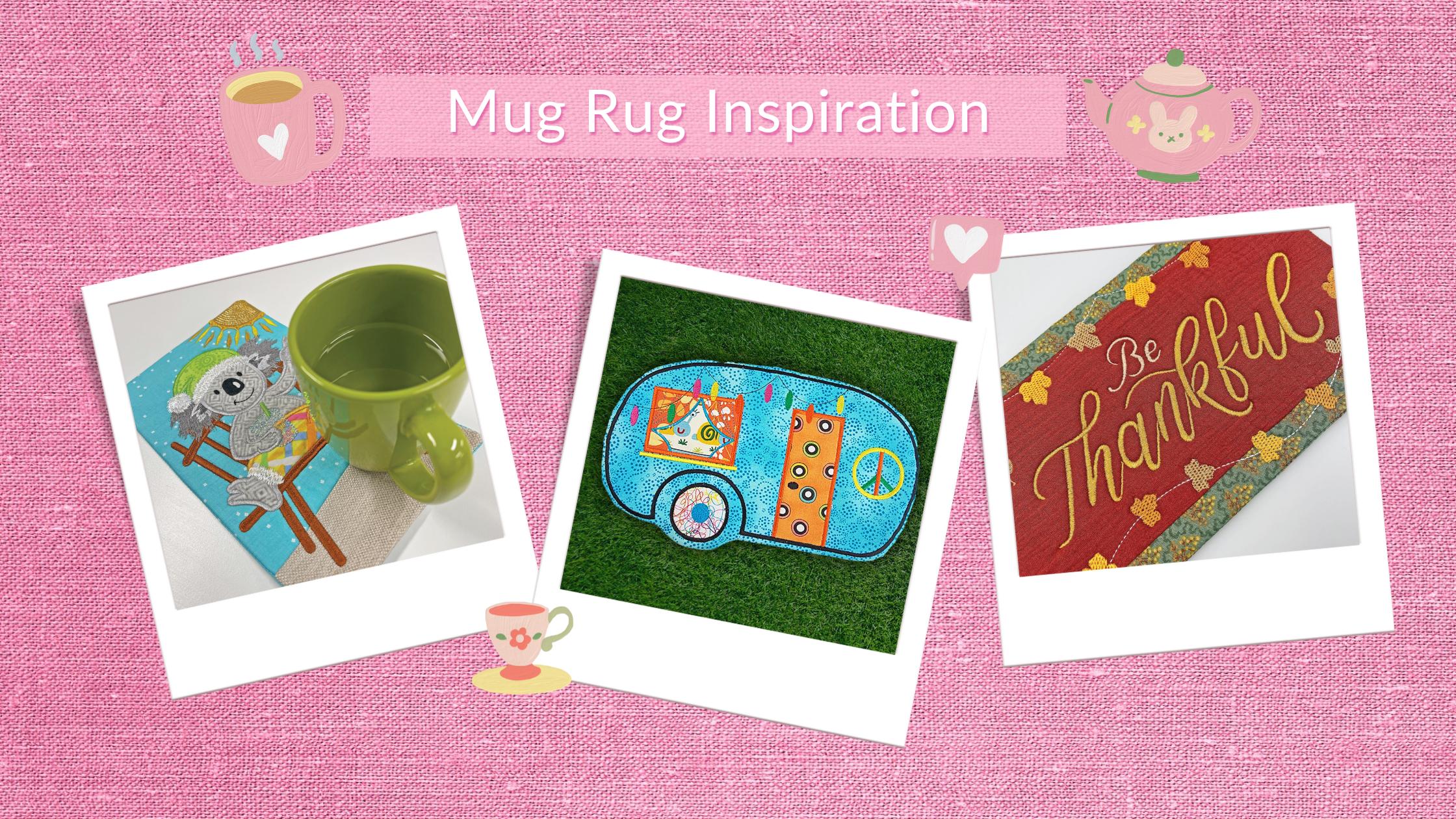Bookmark this blog for all the major embroidery terms you need to know!
When you first get into machine embroidery, wrapping your head around everything can get a little bit confusing at times. Especially when all you see is embroidery terms that don’t really make sense yet. Here is a list of terms we see and use regularly.
Appliqué – This technique involves trimming or decorating cut from one piece of fabric and then stitching it onto another. The embroidery design is usually cut from the fabric and stitched onto the completed product. Appliqué adds dimension and can include a variety of textures. From the sparkle of glitter to smooth and shiny leather, appliqué elevates a design’s while decreasing the overall stitch count.
Backing – (Also known as Stabiliser) The material used for support and to keep the project secure. This is placed underneath of the embroidered design. Different varieties of backing are available, including cut-away, tear-away, and wash-away in various weights.

Bird Nesting – That awful bunching of thread between the fabric stitched and the needle plate. Bird nesting can cause thread breaks and sewing problems and often results from thread tensions being too loose, the machine not being threaded correctly, or the bobbin case not being inserted properly.
Bobbin – In is a small spool wound with the thread. These are used on lockstitch machines and usually come pre-wound from the manufacturers. Can be purchased separately. You can also wind your own bobbin for your embroidery machine. As there are different weights of bobbin thread, please check your manual to see which weights are recommended for your machine.
Bobbin Case – This case holds the bobbin in place in the machine and applies tension to the thread.
Bobbin Tension – Bobbin thread tension should be set so very little thread is consumed in each stitch. Therefore, the bobbin thread is tight enough to consistently hold the needle thread down on the underneath side of the embroidered item. See tension.
Chenille – Form of embroidery in which a loop (moss) stitch is formed on the topside of the fabric. Uses heavy yarns of wool, cotton or acrylic. Created by a chainstitch machine that has been adjusted to form this stitch type. Also known as loop piling.

Cut-away – Stabiliser (backing) used behind the fabric being embroidered to prevent shifting and pulling. Cut-away is available in light, medium, and heavy weights and needs to be trimmed with scissors after embroidery.
Digitise – Converting artwork into a computerised embroidery file, with each element of the design programmed as a specific stitch type. The digitised program controls every action of the embroidery machine, including thread changes, trims, and other functions. Digitising was formerly called “punching” because of an earlier method with paper tapes punched with holes.
Density – Number of stitches in a specific area.
File Format – Every type of embroidery machine reads a different language, so you’ll need to load the design formatted with the right file extension for your machine. Here’s a quick reference:
| ART | Bernina |
| DST | Tajima, Brother, Husqvarna, Janome, & Pfaff |
| EXP | Bernina |
| HUS | Husqvarna Viking |
| JEF | Janome |
| PES | Brother, Baby Lock |
| VIP | Husqvarna Viking, Pfaff |
| VP3 | Husqvarna Viking |
| XXX | Singer |
Fill Stitches – One of the three most common stitches used in embroidery along with the run stitches and satin stitches. Fill stitches are used to cover large areas and they generally have a flat look. Altering the angle, length and direction of the stitched pattern can create different types of fill patterns.
Flexible Foam Interfacing – Provides a puffy dimension when stitched under fabric.

Float – Un-hooped stabiliser placed between the fabric and the hooped stabiliser, providing additional support.
Fringe – An embroidery technique that creates dimensional loops. Fringe designs are digitised with rows of satin stitches, held in place by a row of smaller satin stitching or fill stitches. The bobbin stitches are then clipped from behind and fluffed from the front.
Gapping – When the fabric is seen either in the middle of an embroidery design or on the edges.
Hooping – The process where fabric and stabiliser are framed and secured inside the embroidery hoop.
Hoops – Hoops attach to the embroidery machine pantograph and grip the fabric tightly between an inner and outer ring.
Hoop Sizes – Hoop sizes are generally 4×4”, 5×7”, 6×10”, 8×12”, and 9×14”. These sizes are not the same as the sewing field of an embroidery design. The design will always be smaller than the hoop, as the machine cannot sew too closely to the edge of the internal hoop.
In-the-Hoop – (ITH) A project completed, from start to finish, in the embroidery hoop.

Requires a single hooping and the purse is completely lined with no raw seams. The zips are even inserted in the hoop.
Jump Stitch – Jump stitches are used to move the needle from one point in an embroidery design to another, creating stitches that are longer than the machine would normally allow. These lines of thread must later be hand clipped away. (Some machines automatically clip jump stitches.)
Looping – These are loops on the top of the embroidered surface. Can be fixed by applying a correct tension to the thread and adjusting stitching speed.
Monogramming – Also called “lettering”. It is embroidery of letters, usually for initials.
Pantograph – The Pantograph is used to attach the hoop to the embroidery machine and can be moved on an X and Y axis.
Paper Tape – A semi-transparent tape used to secure fabric in-the-hoop for machine embroidery projects. Paper Tape does not leave sticky residue on the needle, easily tears away from stitches, and can be used on the underside of the hoop without rolling.
Piecing – Many small pieces of fabric sewn together (often called patchwork).

Puckering – When fabric is gathered by the stitches, bunching into little puckers. Puckering is often caused by loose hooping, insufficient stabiliser, and incorrect thread tensions or stitch density.
Presser Foot – A metal ring around the needle that touches the fabric.
Run Stitch – Run stitches (or running stitches) are made when a single stitch is formed between two points.
Satin Stitches – The satin stitch is made from very closely placed zigzag stitches for bold stitching. Column/satin stitches are often used for borders, lettering, and covering the raw edges of appliqué fabric.
SPI – Abbreviation for Stitches Per Inch.
SPM – Abbreviation for Stitches Per Minute.
Stabiliser – A woven or non-woven material used underneath the item being embroidered. Stabiliser provides support, prevents shifting during embroidery, and is available in a variety of types and weights, including cut-away, tear-way, wash-away, and more.
Stitch Count – The number of stitches used in an embroidery design.
Tack-down Stitch – The initial stitches that hold appliqué fabric in place.
Tatami Stitches – Also known as fill stitches, tatami stitches are a series of run stitches used to cover large areas. Different fill patterns can be created by changing the length, angle, and sequence of the stitches.
Tear-away – Stabiliser (backing) used behind fabric being embroidered to prevent shifting and pulling. Tear-away is available in various weights and tears easily away after embroidery is complete.
Tension – Tautness of the thread. Quality embroidery depends upon proper thread tension, which can be adjusted on the machine and bobbin. When looking at the underside of a satin (column) stitch, about ⅔ of the thread should be needle thread and ⅓ should be bobbin thread.
Topping – Stabiliser placed on top of fabric being embroidered to prevent stitches from sinking into the pile. Topping can include tear-away and wash-away.
Underlay – Stitching put underneath the embroidery design to stabilise the fabric and raise the design so detail isn’t lost.
Wash-away – Stabiliser that dissolves in water after embroidery. Projects such as freestanding lace are embroidered on wash-away. After rinsing the design in water, only the stitching is left behind.

I hope this list of embroidery terms glossary has helped you to understand the basics of embroidery a bit more.
If there is anything that has been missed in the embroidery terms list above, or if you have a term in mind you would like to learn more about, please let us know!

We have a wonderful Embroidery Community, an inspirational ITH Machine Embroidery Course and a great tutorial library for you to learn more about In The Hoop, Machine Embroidery.




Leave a comment
All comments are moderated before being published.
This site is protected by hCaptcha and the hCaptcha Privacy Policy and Terms of Service apply.